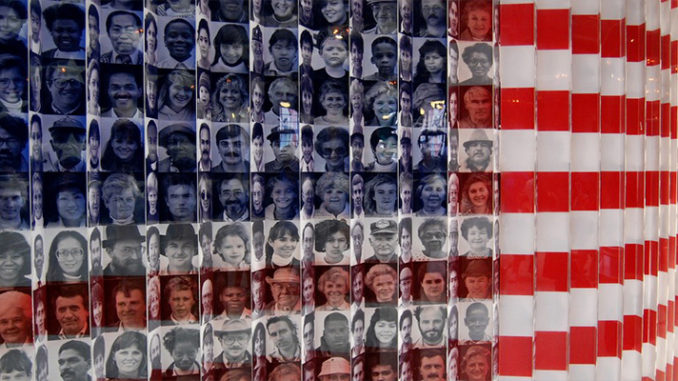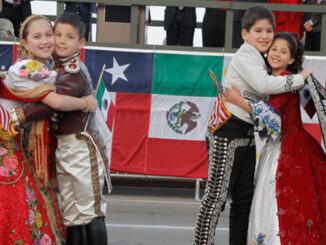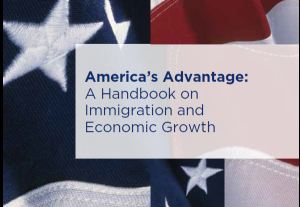
The story of President Trump’s victory over Hillary Clinton has been analyzed and reanalyzed, told and retold since November. Is there more to add? The short answer, based on four reports released on Tuesday, is yes, and what the reports say is provocative.
The reports debunk some of the assertions of why Trump won — his criticism of free trade agreements apparently was not as big a factor as some have suggested — while focusing on the specific role that race, religion, immigration and national identity played in the outcome and particularly how those issues may have influenced voters who switched to Trump after supporting President Barack Obama in 2012.
One of the reports notes that while those factors played a more significant role in 2016 than in 2012, in large part because Trump highlighted them, the ground was already shifting on those issues before Trump. If these issues continue to remain prominent in the national debate, they could further alter the alignment of American politics.
The reports are the first produced by the Democracy Fund Voter Study Group, which comprises 20 analysts from think tanks or other institutions across the ideological spectrum. Driving forces in assembling the project were Joe Goldman of the Democracy Fund and Henry Olsen of the Ethics and Public Policy Center.
The findings are based on online surveys, including one after the election with a sample of 8,000 people who had participated in other such surveys in 2011, 2012 and mid-2016. The surveys were conducted by the firm YouGov.
The authors of the reports approach the implications of what happened in 2016 from slightly different angles, examining the appeal of candidate Trump, the multifaceted coalition that came to support him, political divisions that continue between and within the parties, and how certain issues came to prominence in 2016.
John Sides, a political scientist at George Washington University and editor-in-chief of the Monkey Cage blog hosted by The Post, directly confronts the role of race, religion and immigration and concludes that “attitudes about immigration, feelings toward black people and feelings toward Muslims became more strongly related to voter decision-making in 2016 compared to 2012.”
Sides argues that, even before 2016, there was “an increasing alignment between race and partisanship” and among whites there was “an increasing division based on education,” with non-college educated whites moving away from the Democratic Party, especially after the election of Obama in 2008.
“The shifts among white people overall and white people without a college degree occurred mostly among white people with less favorable attitudes toward black people,” he writes. “No other factor predicted changes in white partisanship during Obama’s presidency as powerfully and as consistently as racial attitudes.” But he also notes that there also were clear divisions between white Democrats and white Republicans in their evaluations of Muslims and their attitudes toward immigration.
Economic stress also was a factor, with those who expressed negative views about the economy in 2012 “more likely to express key negative cultural attitudes in 2016,” according to a news release summarizing the findings.
Partisan loyalty was high in 2016, with 86 percent of Obama voters siding with Clinton and 89 percent of Mitt Romney’s voters supporting Trump. But Trump won a bigger share of those who had backed Obama than Clinton won among those who supported Romney. Had Clinton won a similar level of support from Romney defectors that Trump won among Obama defectors, she likely would be president, Olsen said, based on his analysis of the findings.
Sides examined possible reasons for those who switched from Obama to Trump. He found that there was “no statistically significant relationship between trade attitudes and vote choice in either election [2012 or 2016]. Nor was the widely-discussed issue of economic anxiety more important in 2016 than in 2012.
Even before the 2012 election, Sides writes, a substantial number of white Obama supporters had views about Muslims, blacks and immigration that were less favorable. What did change between 2012 and 2016 was the increased significance in voters’ minds of issues about immigration and attitudes toward blacks and Muslims, among whites both with and without college degrees.
Even among GOP primary voters, those who backed Trump had less favorable attitudes toward Muslims and were more likely to say that immigration by foreigners should be made harder, according to data offered in a paper by Robert Griffin and Ruy Teixeira of the Center for American Progress. This was even more the case on immigration among those voters who switched from Obama to Trump.
“Those who held views of immigrants, Muslims, minorities and feminist women as the undeserving ‘other’ were particularly susceptible to Trump’s appeal in both the primaries and general election,” they write.
Emily Ekins of the Cato Institute provides a typology of the Trump coalition. She labels his core constituency as “American Preservationists” who comprise about a fifth of his supporters, and are less loyal Republicans than are other Trump voters. They lean economically progressive, think the political systems are rigged and have “nativist immigration views and a nativist and ethnocultural conception of American identity.”
About one in three Trump supporters are “Staunch Conservatives.” Ekins writes that they are “steadfast fiscal conservatives, embrace moral traditionalism and have a moderately nativist conception of American identity and approach to immigration.”
“Free Marketers,” a quarter of Trump supporters, hold more moderate-to-liberal views on race and immigration and supported Trump primarily because of their dislike for Clinton. “Anti-Elites,” about a fifth of the Trump coalition, are motivated by a belief that the political systems are rigged but take a more moderate position on immigration, race and national identity. She labeled a small fraction of his supporters as “The Disengaged” and said they feel unable to influence political and economic institutions.
Lee Drutman of the New American Foundation writes that, by making issues related to national identity more prominent, Trump was able to attract economically liberal but socially conservative voters who had backed Democrats previously.
“Trump’s candidacy has brought more economic liberals into the Republican Party, moving the party’s center of gravity on these issues to the left,” he writes. “Trump has also moved the party to a much more nativist position on questions of national identity,” adding that these shifts are creating strains with the GOP coalition.
Although divided on some important economic issues, particularly the issue of income inequality, Republicans and Democrats are less divided on economics than they are on cultural and national identity issues. Supporters of Clinton and of Sen. Bernie Sanders are less divided on issues than are Republicans, with the main difference being “about attitudes toward the establishment and the existing order than it is about specific issue positions.” One exception is trade policy.
Drutman notes that Trump has made clear he intends to put a priority on the issues that helped elect him, from his proposed travel ban that is now in the courts to crackdowns on illegal immigrants. He argues that this could further realign the parties, with Democrats pressured to move further left on these issues. Republicans, meanwhile, could be forced to shift toward those Trump voters, which could “further isolate remaining conservatives with moderate positions on immigration.”



